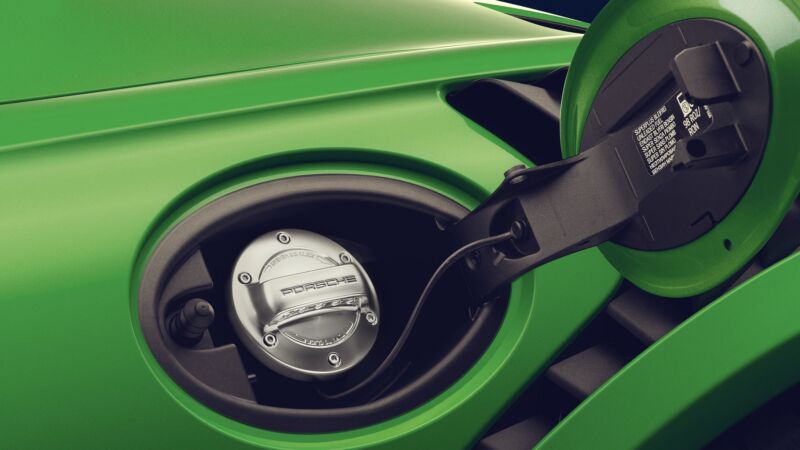Porsche and Siemens break ground on low-carbon e-fuel plant in Chile

Even with the best will in the world, it will be many years before we entirely decarbonize our transport. The UK, France, China, and even California have announced plans to phase out the sale of new vehicles with internal combustion engines in the late 2030s, but to our knowledge, none of these plans include a ban on vehicles already on the road. If those cars and trucks are going to keep driving for a while longer, it behooves us to get creative when it comes to the fuel they’ll burn.
Which is why I’m a little excited about a collaboration between Porsche and Siemens to do just that. As we reported earlier this year, Porsche and Siemens are developing a low-carbon synthetic fuel that combines green hydrogen (produced by wind-powered electrolysis) with carbon dioxide (filtered from the atmosphere) to form methane, which is in turn then turned into gasoline.
On Friday, the two organizations broke ground on the Haru Oni manufacturing plant near Punta Arenas in Chile. Assuming all goes to plan, the plant should be able to produce 34,000 gallons (130,000 L) of synthetic fuel in 2022, before scaling up to 14.5 million gallons (55 million L) by 2024 and 145 million gallons (550 million L) by 2026, at a cost of around $7.6 per gallon ($2 per L).
“We have at least the best guess, that we could reduce the carbon footprint by 90 percent,” explained Michael Steiner, member of the Porsche executive board for research and development. “So, still there is some residual CO2 footprint from blending and other processes, and you have to have in mind we have the expertise to design this fuel fully compatible to the existing fuel and to the existing engines and this is key for success,” Steiner explained.
Porsche’s particular interest in synthetic fuels is driven by the fact that 70 percent of the cars it’s ever made are still on the road. “So we did already testing on historic 911 cars with e-fuel, and that is one of our tasks in this project that we have the expertise to specify the fuel in a way that this is really compatible with the engines we build,” Steiner said.
“I’m talking about naturally aspirated, really high-revving engines like the GT3 or GT3 RS, or the 911 Turbo, and the fuel has also be feasible for our historic cars, and we are really sure that this could be the case—our tests are really promising. We are in the middle of testing with current modern engines as well as with historic engines,” he said.
To begin with, Porsche will use the synthetic fuel to power racing cars in Supercup series, a single-make race series for Porsche 911s. But as production scales up, Steiner says it could also be used at the various Porsche Experience Centers around the world, as well as for the first fill of new cars built at its various factories. Beyond that, the fuel could be introduced into markets where carbon taxes make it attractive, displacing gasoline derived from fossil fuels extracted from the ground.
It might even find itself a rather high-profile customer. Formula 1 has announced a plan to become carbon-neutral by 2030, which will require the use of synthetic fuel (although to be clear, the vast majority of the sport’s carbon emissions come from teams and fans traveling to races, as well computational fluid dynamics server farms and wind tunnels, not 20 race cars each burning ~100 kg of fuel on race day).
Steiner confirmed that Porsche and Formula 1 have been in discussions already. “We have had talks with Formula 1, yes. And we would be able to give them a share, but not just now in the beginning,” he told me.
https://arstechnica.com/?p=1793855